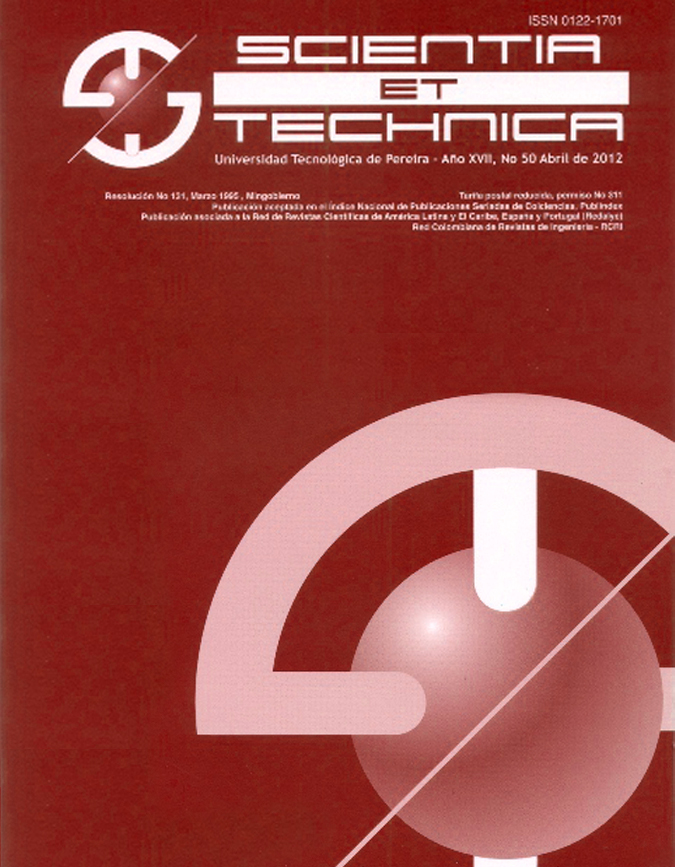Design of a charge regulator for application in an isolated micro grid with photovoltaic generation
DOI:
https://doi.org/10.22517/23447214.18081Palabras clave:
MPPT algorithm, SEPIC converter, micro grid, photovoltaic system.Resumen
This paper presents the design of a charge regulator operating in an isolated micro grid with photovoltaic generation. The converter selected for this application is a SEPIC with a MPPT algorithm for the cases in which the energy demand is greater than the energy available. The algorithm is able to modify its point of maximum power, in order to perform the recharging and supply of power to the battery bank of the system (isolated microgrid) and a group of charges set at a level of determined of voltage. Finally, the results of the tests carried out are presented and the conclusions are given.Descargas
Citas
[1]. M. Malinowski, J. I. Leon and H. Abu-Rub, “Solar Photovoltaic and Thermal Energy Systems: Current Technology and Future Trends,” in Proceedings of the IEEE, vol. 105, no. 11, pp. 2132-2146, Nov. 2017.doi: 10.1109/JPROC.2017.2690343.
[2]. R. V. Maglin J.R, “Design and Analysis of SEPIC Converter Based MPPT,” Journal of Electrical Engineering & Technology, vol. 9, pp. 742-749, 2014.
[3]. S. Kundu, N. Gupta and P. Kumar, “Review of solar photovoltaic maximum power point tracking techniques,” 7th India International Conference on Power Electronics (IICPE), Patiala, 2016, pp. 1-6. doi: 10.1109/IICPE.2016.8079494
[4]. EnerNaval, Reguladores de carga solar, Epaña, 2011. www.enernaval.es/PDF/Solar/Comparativa%20regul adores%20EnerNaval.pdf
[5]. M. Taghvaee, M. Radzi, S. Moosavain, H. Hizam y M. H. Marhaban, “A current and future study on nonisolated DC–DC converters for photovoltaic applications,” Renewable and Sustainable Energy Reviews, vol. 17, pp. 217-227, 2013.
[6]. J. M. Enrique, E. Duran, Sidrach-de-Cardona M, J. M. Andujar, M. A. Bohorquez and J. Carretero, “A new approach to obtain I-V and P-V curves of photovoltaic modules by using DC-DC converters,” Conference Record of the Thirty-first IEEE Photovoltaic Specialists Conference, 2005., Lake Buena Vista, FL, USA, 2005, pp. 1769-1772. doi: 10.1109/PVSC.2005.1488493
[7]. N. Penina, Y. V. Turygin and V. Racek, “Comparative analysis of different types of hybrid
electric vehicles,” 13th Mechatronika 2010, Trencianske Teplice, 2010, pp. 102-104.
Descargas
-
Vistas(Views): 654
- PDF Descargas(Downloads): 1210
Publicado
Cómo citar
Número
Sección
Licencia
Derechos de autor 2018 Scientia et technica

Esta obra está bajo una licencia internacional Creative Commons Atribución-NoComercial-CompartirIgual 4.0.
Derechos de autor y licencias
La revista es de acceso abierto gratuito y sus artículos se publican bajo la licencia Creative Commons Atribución/Reconocimiento-No Comercial-Compartir bajo los mismos términos 4.0 Internacional — CC BY-NC-SA 4.0.
Los autores de un artículo aceptado para publicación cederán la totalidad de los derechos patrimoniales a la Universidad Tecnológica de Pereira de manera gratuita, teniendo en cuenta lo siguiente: En caso de que el trabajo presentado sea aprobado para su publicación, los autores deben autorizar de manera ilimitada en el tiempo, a la revista para que pueda reproducirlo, editarlo, distribuirlo, exhibirlo y comunicarlo en cualquier lugar, ya sea por medios impresos, electrónicos, bases de datos, repositorios, discos ópticos, Internet o cualquier otro medio requerido.
Los cedentes mediante contrato CESIÓN DE DERECHOS PATRIMONIALES declaran que todo el material que forma parte del artículo está totalmente libre de derechos de autor de terceros y, por lo tanto, se hacen responsables de cualquier litigio o reclamación relacionada o reclamación relacionada con derechos de propiedad intelectual, exonerando de toda responsabilidad a la Universidad Tecnológica de Pereira (entidad editora) y a su revista Scientia et Technica. De igual forma, los autores aceptan que el trabajo que se presenta sea distribuido en acceso abierto gratuito, resguardando los derechos de autor bajo la licencia Creative Commons Atribución/Reconocimiento-No Comercial- Compartir bajo los mismos términos 4.0 Internacional — CC BY-NC-SA 4.0.
https://creativecommons.org/licenses/by-nc-sa/4.0/
A los autores, la revista Scientia et Technica tiene la obligación de respetarle los derechos morales (artículo 30 de la Ley 23 de 1982 del Gobierno Colombiano) que se les debe reconocen a estos la paternidad de la obra, el derecho a la integridad y el derecho de divulgación. Estos no se pueden ceder ni renunciar.



